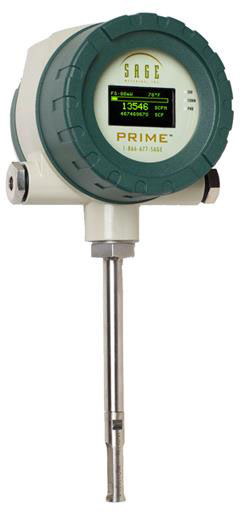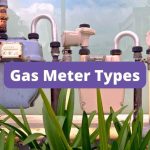Sage Metering Tackles 9 Thermal Mass Flow Meter Limitations
Sage Metering, the manufacturer of premium thermal mass flow meters, has published an article on overcoming nine thermal mass flow meter limitations.

Linc Energy Systems is an authorized distributor of Sage Metering thermal mass flow meters (including the Prime and Paramount)
Typical Applications for Thermal Mass Flow Meters
The thermal mass flow meter measures natural gas mass flow to combustion sources, such as boilers, heaters, and furnaces, for energy management and environmental reporting. Additionally, the flow meter measures natural gas flow in submetering applications for cost accounting, process efficiency, and tenant billing. This meter technology also measures airflow for combustion air and compressed air.
The primary benefits of using this technology in these applications are that the meter obtains mass flow measurement, is easy to install, has excellent turndown capabilities, low-pressure drop, and low installation cost.
What are the nine limitations, and how to overcome them?
Like any flow meter, thermal mass flow meters have limitations. In the new article, Sage Metering identifies nine limitations, offers ways to work around them, or identifies when to find alternative technologies.
What are the nine barriers when using thermal mass flow meters?
- Wet gas can cause inaccurate flow measurements with the thermal flow meter.
- There is a diminished sensitivity when measuring with this meter style at high flow rates.
- The thermal mass flow meter can only accurately measure the gas (or gas mixture) for which the meter was calibrated.
- The thermal mass flow meter needs to be calibrated or have its calibration verified periodically.
- The thermal mass flow cannot accurately measure gas when its composition changes.
- The thermal mass flow meter requires a fully developed flow profile at the sensor to be accurate.
- The sensor buildup decreases the flow meter’s accuracy.
- Obtaining accurate flow measurement in large air ducts is challenging because the flow profile is predicated on the pipe diameter, requiring very long straight runs and typically unavailable in these environments.
- While thermal mass flow meters excel in low-flow applications, they need to be calibrated at low velocities, and not all manufacturers have this calibration capability.
Now that you have read the limitations, get answers in the article, “How to Overcome 9 Thermal Mass Flow Meter Limitations.”



Informative article. Nowadays, accuracy is more important than anything. If your flow meters and gauges are not accurate, it might result in significant damage and loss due to error outcomes. By satisfying global industrial standards, Proper calibration services will grow your business to the next level.